Search
Search Results
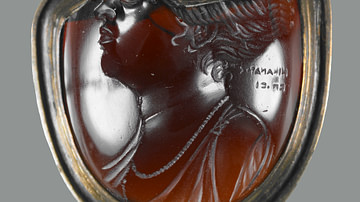
Image
Garnet Intaglio of a Ptolemaic Queen
A carved garnet set in gold, depicting a Ptolemaic queen who is either Berenike II (r. 246-222 BCE) or Cleopatra I (r. 195-176 BCE). Created by the ancient artist Nikandros.
The Walters Art Museum, Baltimore.

Image
Carnelian Intaglio of a Ptolemaic Queen as Aphrodite
Gem intaglio mounted on gold and framed by glass, emeralds and garnets. The draped and sceptred figure is thought to be a Ptolemaic queen. In her right arm, she bears the cornucopia of Aphrodite or Isis-Aphrodite. Egyptian, 1st century BCE...
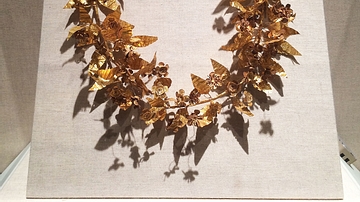
Image
Ptolemaic Gold Wreath
Wreaths like this one formed to resemble flowers and leaves were used to crown athletic victors throughout the ancient Greek world. The Egyptian-born Greek writer Athenaeus of Nitocric (c. late 2nd-3rd century CE) tells of guests wearing...
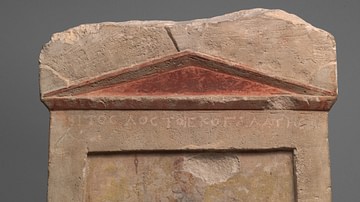
Image
Ptolemaic Funerary Slab for a Galatian Mercenary
A limestone funerary stela portraying a blue-cloaked soldier with a spear and Galatian oval shield. from Alexandria, late 3rd century BCE.
Metropolitan Museum of Art, New York.

Article
Kingdom of Magadha: Wars and Warfare
In ancient India from the 6th century BCE onwards, the kingdom of Magadha (6th century BCE to 4th century BCE) made a mark for itself. Located in the eastern part of India in what is today the state of Bihar, it outshone other kingdoms and...

Image
Head of a Mummy from Ptolemaic-Roman Egypt
This is the upper part of the mummy of an unknown young man; probably, his age was below 21 years. The rest of the mummy is intact but is not shown here. The mummy was discovered in the 1820s. The elaborate preparation of this mummy is highly...

Image
Book of the Dead, Ptolemaic Period
A detail from the Book of the Dead of Tayesnakht from Thebes, Ptolemaic Period, 332-30 BCE. (Egyptian Museum, Turin)
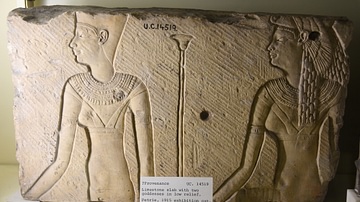
Image
Ptolemaic Slab with Two Goddesses
This is a limestone block which depicts the heads and bodies of two goddesses; both are looking to the left side. The background was left rough. From Egypt, precise provenance of excavation is unknown. Ptolemaic Period, 332-30 BCE. The Petrie...
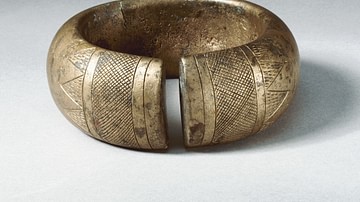
Lesson Pack
Kingdom of Kush
We have prepared three lesson plans including classroom activities, assignments, homework, and keys as well as: Multiple choice quiz questions in an excel format. Glossary of keywords and concepts in an excel format. Open questions...
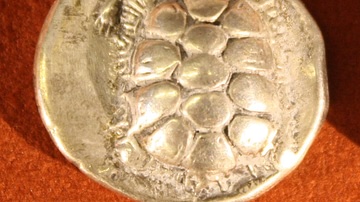
Article
The Island Kingdom of Aegina: The Old Gods Still Whisper Their Truths
Today, traveling an hour by ferry from Piraeus, the port of Athens, the first remnant of Aegina's great past a visitor will see is the lonely pillar of Apollo rising from the trees on the hill of Kolona. Once a splendid complex of three buildings...